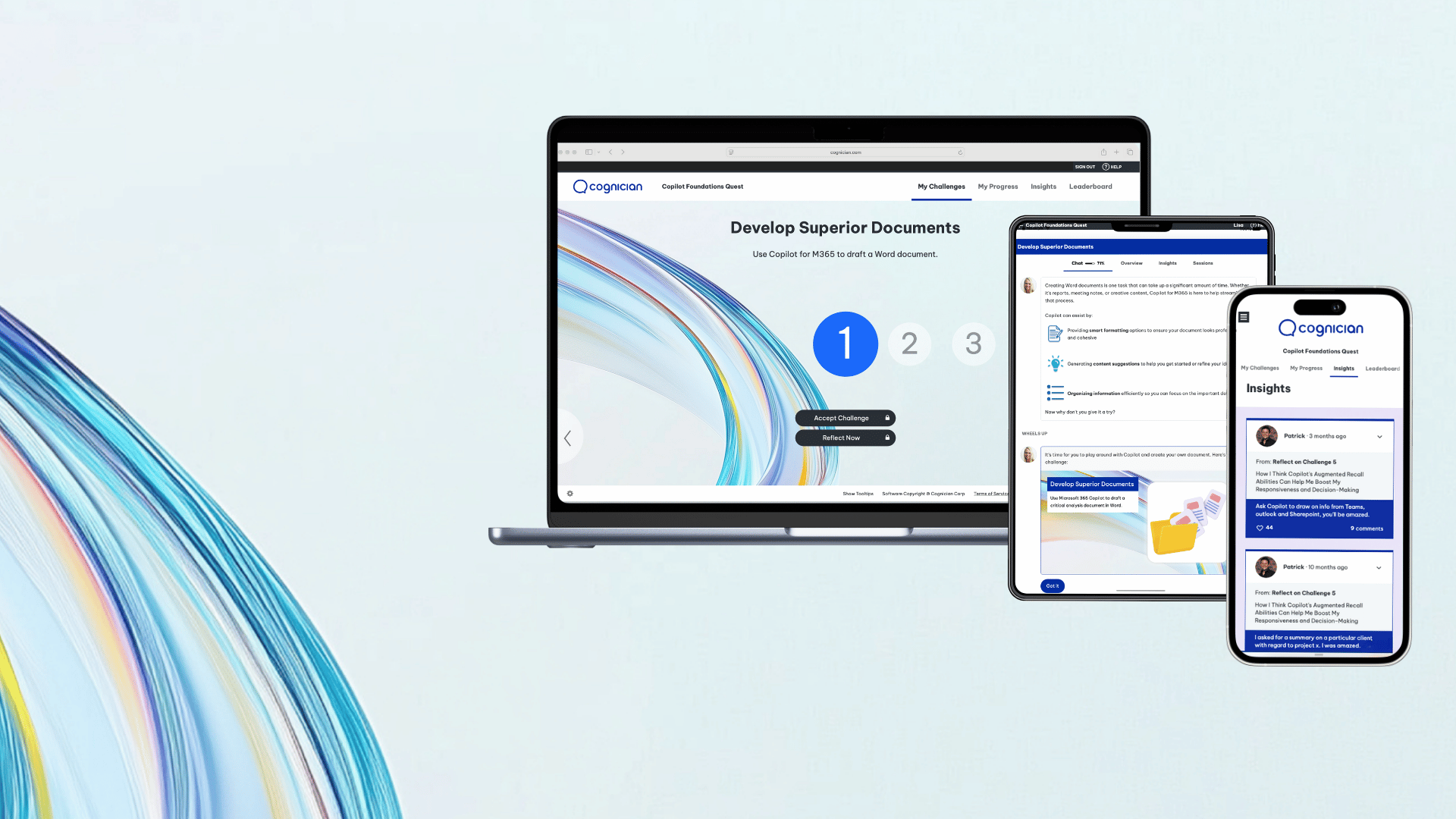Discovery is key to building relevant and valuable behavior-change programs that are measurably effective.
Recently, a leadership and social impact program that we partnered on won multiple Brandon Hall HCM Excellence Awards:
- Gold for Best Unique or Innovative Leadership Program
- Gold for Best Advance in Social Impact Innovation
- Silver for Best Unique or Innovative Learning and Development Program
That program has also been shortlisted for a CIPD award (winners to be announced later this year).
There were many high-quality ingredients that went into creating this multi-award winning program, but here we'll focus on one in particular – the Discovery phase. This process enables us to get the understanding we need to build behavior-change programs that are measurably effective.
Although we had fantastic content to begin with, we also had three intensive discovery sessions with key stakeholders. During these sessions, we focused on understanding the audience's constraints and identified the strategic behavioral objectives for the program.
We then had two further sessions with representatives from the two target audiences. It was the perfect opportunity to learn more about the needs and challenges experienced by each audience and also to test the relevance of our ideas.
As a final step before building the program, we created an evidence map. For each strategic objective, we carefully unpacked the specific mechanisms that would activate behavior change. And, based on those, we were able to clearly map out how the content, activities, and reflections contributed to the objectives.
This highlighted precisely what data collection points we needed to include. It helped us to design both with and for evidence. And, in the end, we were able to report on relevant evidence of real impact – an important judging criterion for an award submission.
We took nothing for granted. We looked further than the content
– and it made all the difference.
The Discovery process is critical when it comes to creating value-focused content. It ensures that the programs we create aren't just a barrage of information, but rather, offer an engaging experience while asking thoughtful questions.
Asking the right questions, at the right time, can have a powerful and lasting impact on people. That's why it's critical for organizations to identify and highlight the most powerful ideas that can make the biggest difference to their employees – and why the Discovery process is at the heart of creating award-winning programs.
If you're considering trying out the process yourself, here are the top five principles of Discovery at its best:
- Invest the time
This phase of the development process is critical for creating clarity and setting direction. When deadlines are tight, it's tempting to trim Discovery time. But few things waste time and damage quality more than speeding off in the wrong direction without a clear destination. You're more likely to miss a target if you don't take enough time to aim.
- Park the content
Content alone rarely activates behavior change. Good content is useful to have later on when you're developing the details of the learning experience, but content – no matter how good – can undermine effective Discovery. It's a blinker that limits your range of view. It's a siren song that can seduce your team to set the wrong course.
- Use the gaps
Discovery is a phase not an event. Often, the greatest leaps in clarity and creativity happen when you're critically reflecting on ideas in the gaps between conversations with stakeholders.
- Consult your users
Even though it might not be an option, it always pays to ask for the opportunity to connect with individuals from the target audience. To activate behavior change effectively, you need to strive to learn what your audience really needs. Going straight to the source is a great way to uncover that.
- Map the evidence
Evidence is often an afterthought. If you wait until after the program is built before identifying the relevant data points, you're missing a huge opportunity. Map the evidence while you design. If you ask how each design decision causes or contributes to the desired behavior change, then you can both validate your decisions and identify the necessary data-collection points.
How will you use these principles in your next multi-award winning program?



.png)

